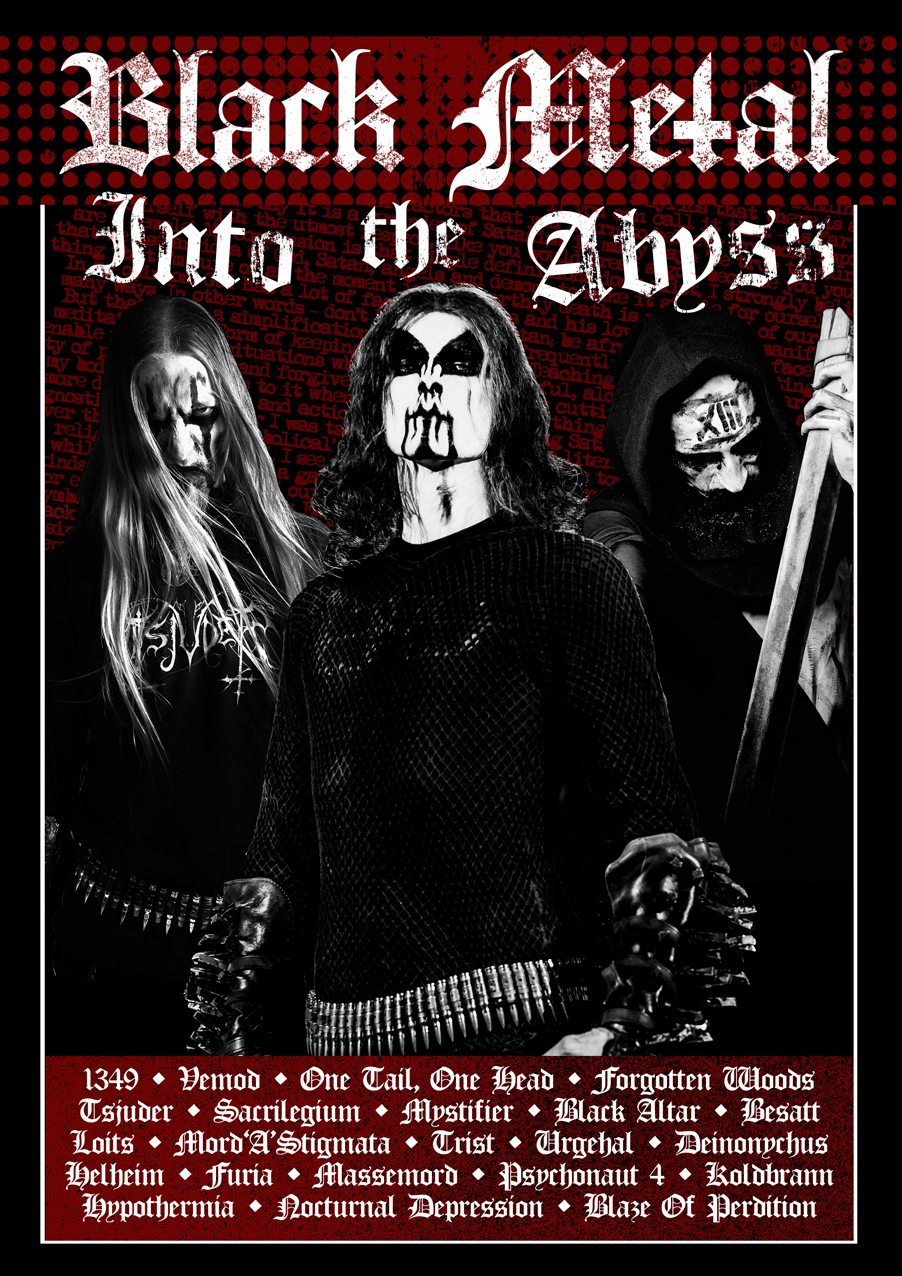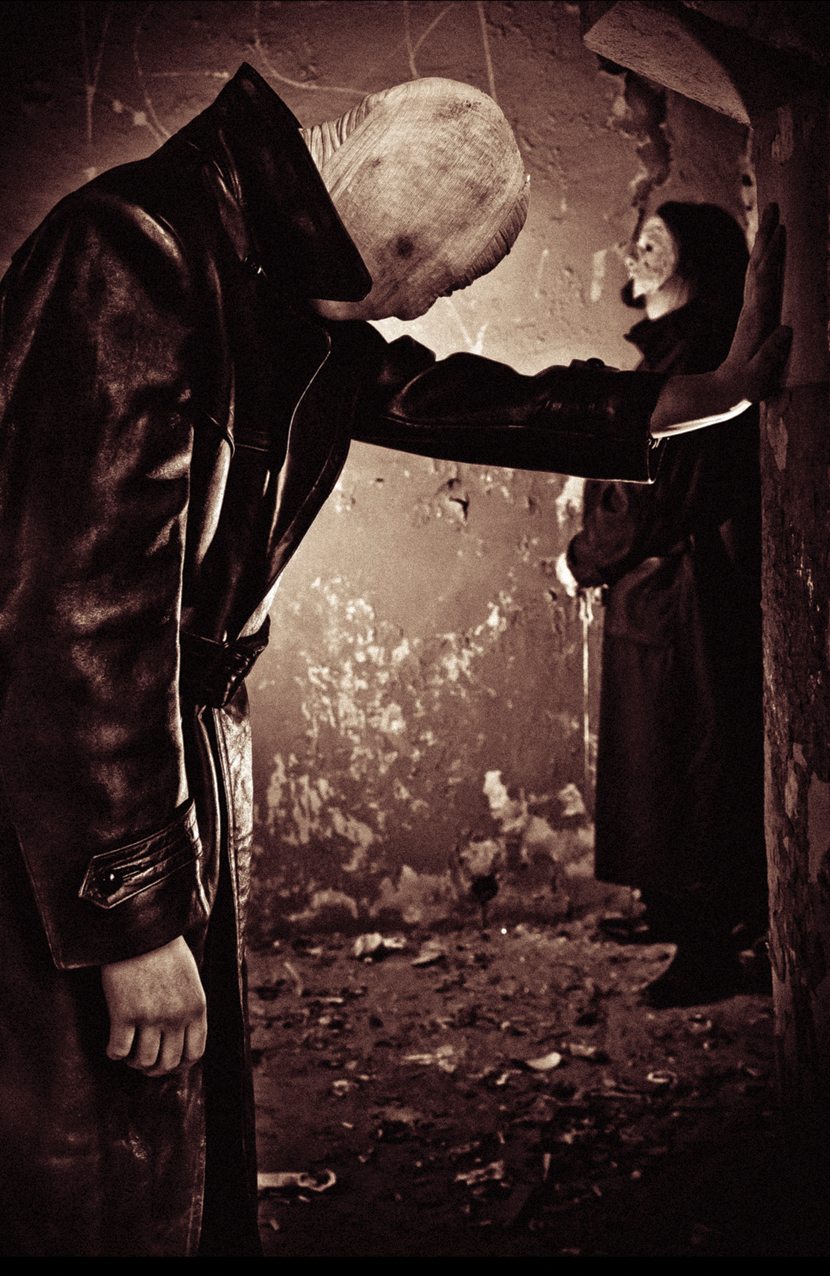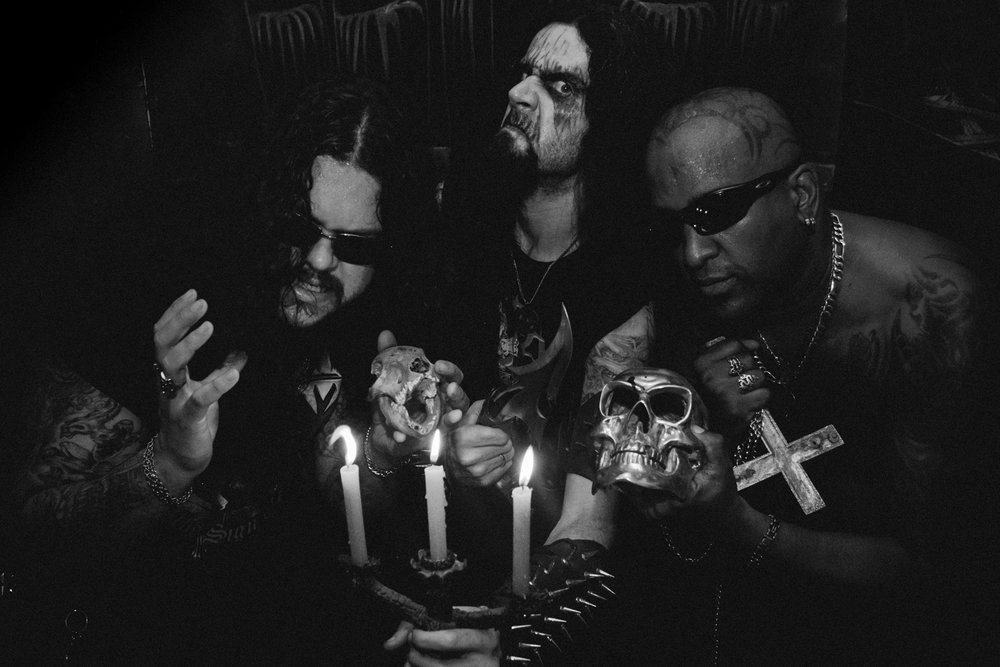
For fans of the cold, dark and glorious sounds of black metal, or even those with a casual or cultural interest in the genre, the work of Dayal Patterson is indispensable. Since the release of Black Metal: Evolution of the Cult, the British author has become one of the best sources of archival and historical information on all scenes and eras. Earlier this year, Dayal released his latest installment, Black Metal: Into the Abyss, along with a visual companion filled with high-quality images from photoshoots and live shows (check out two of the photos below as examples).
Before launching into new territory, which he plans to explore in future books, Dayal decided to dig deeper into established scenes like Norway and Poland. In particular, he spends much deserved attention on the Nidrosian black metal scene out of the Trondheim area (bands like Vemod and One Tail, One Head). Additionally, he fills in a few blanks with key acts like Mystifier and Forgotten Woods (alas, there still is no chapter on Immortal, but anyone paying attention to the drama of the last few years can understand why).

What results is a literary heaven for black metal obsessives. The book’s format is based on the old-school zines of extreme metal’s developing years. Each band gets a chapter, in which Dayal gives a brief description and then provides the reader with entire interviews. In the introduction, Dayal describes his decision to write the book this way:
“fanzines were a very large part of my early inspiration in writing about music (indeed, the first interviews I ever wrote were for my own fanzine Crypt, some of which were reprinted in Prelude to the Cult) and also an important part of black metal’s cultural development in earlier years.”

This makes for a varied, insightful read that gives readers a more personal look into the creative lives of the artists. In fact, he even gives you an idea of what it’s like to be in the journalist role, detailing the trouble he went through to get the Mystifier interview done. Though I enjoy the editorialized approach Dayal took in his other books, it’s cool to hear from the bands themselves. A couple of my favorite quotes include this one from V’Gandr from Helheim, when describing some of the silliness behind medieval nostalgia:
“Numerous times people ask me, ‘If you could choose an age to live in, would you choose the middle ages, the Viking ages?’ but come on, we’re not five years old, that’s stupid to ask…Studying the past, you are also studying the present and trying to understand how the future will look like. And it’s pretty dark, it’s pretty gloomy.”
One thing that impressed me about V’Gandr was his sense of humor and his ability to be both humble and steadfast about his band’s music. And much of the interview displays the distinction between using the past as an artistic device and turning it into silly kitsch (not going to name names here).
There’s also the fan-level reflections of Vemod’s Jan Even Åsli, talking about his love for black metal classics of Darkthrone, Satyricon, Ulver, Emperor and Taake:
“Every December I have to listen to those albums. I think I will do that maybe forever in that way because it was such a formative period and those are nostalgic gems for me that I will remember forever.”
I enjoyed this observation because it touches on something all music fanatics share: a musical home they like to return to at certain moments. Or perhaps they have multiple eras they like to return to during particular times of the year. It goes to the great truth that all great musicians are great fans of music as well.
Another point of discussion (and probably contention) is the interview with Estonian group Loits. For one of its albums, the band had photos taken wearing uniforms of the German Wehrmacht, opening them up to the charge of being NSBM. But Lembetu explains it well here and speaks eloquently of the complicated history of Estonia during the Second World War. It makes for worthwhile reading, particularly in light of current tensions between Russia and Nato over Syria, Ukraine and other issues.
Any fan of black metal music would be remiss without this book. For those relatively new to the genre, however, I’d say read Evolution of the Cult first, so that you have enough context to catch a lot of the references and nuances expressed here. As the book is mostly interview-based, there’s less to critique in terms of writing on Dayal’s part. The book is better thought of as an archive and reference piece, and in that way it succeeds brilliantly.

Black Metal: Into the Abyss and all other books in the series can be purchased at the Cult Never Dies website. The special American edition of Black Metal: The Cult Never Dies, Volume 1 can be purchased at the Decibel store.





